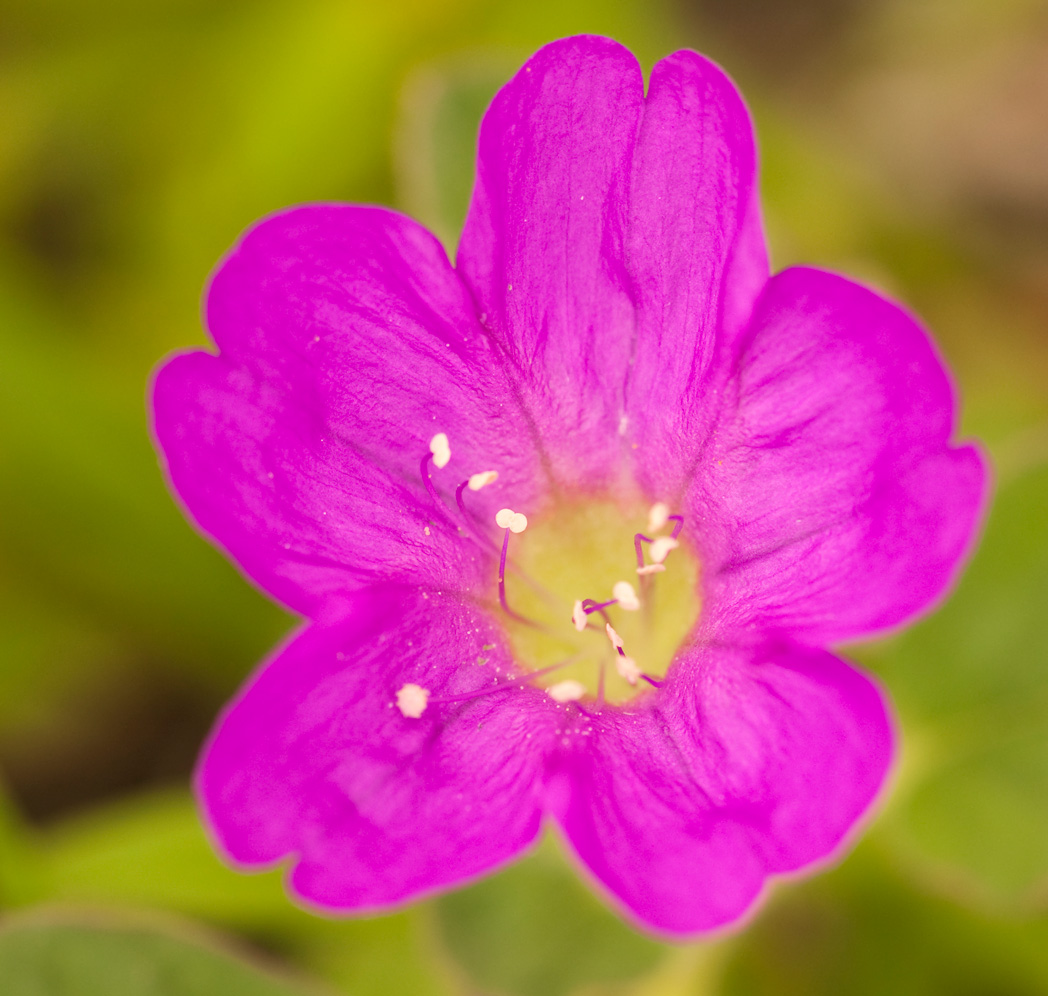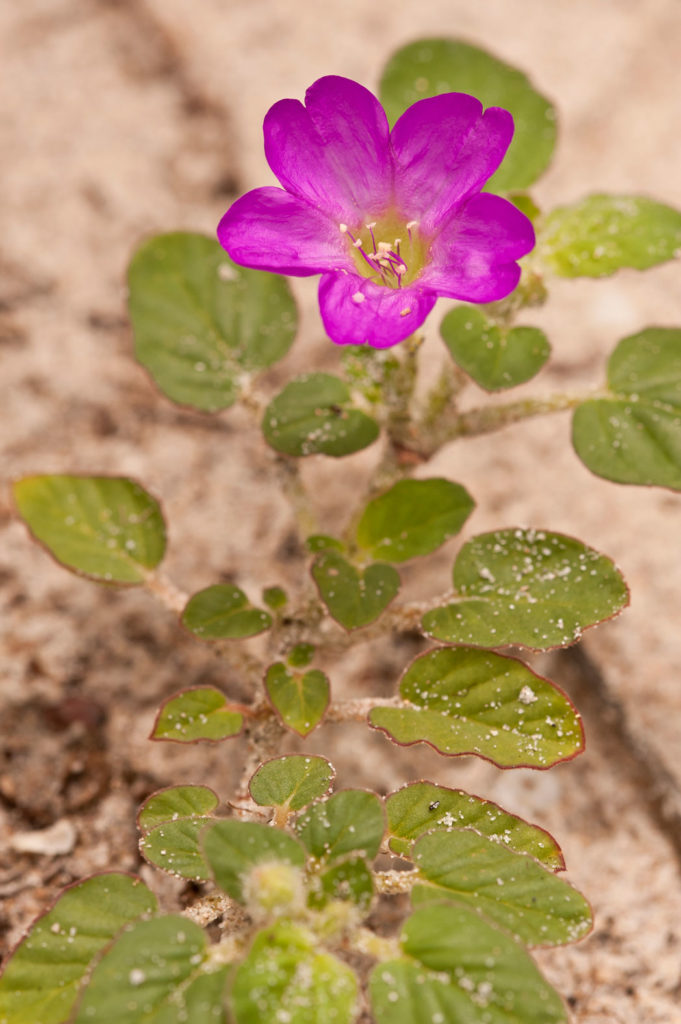Beach peanut
Pictured above: Beach peanut (Okenia hypogaea) by Keith Bradley. Click on terms for botanical definitions. View post as a PDF
Beach peanut is a creeping, vine-like plant that occurs naturally in coastal strands and on beach dunes, where it is a pioneer species. It blooms spring through fall, peaking in summer. Although not endemic to Florida, it occurs in only four counties in South Florida and is a state-listed endangered species.
Beach peanut’s solitary flowers are without petals. The bright bloom is actually formed by several magenta sepals that are fused into a cuplike perianth with a yellow throat. The flowers are ephemeral, meaning they last only one day. As they begin to wilt, they become elongated and curve downward. The fleshy leaves are petiolate, may be ovate, deltate or elliptic, and have reddish undulating margins. They are oppositely arranged. Leaf pairs are considerably unequal in size. Leaf surface is often punctated with red spots. Stems are pubescent and sticky. Fruits are brown or brownish-white and mature underground, giving the plant another common name, Burrowing four o’clock.
Despite its common name, it is not related to the common peanut (Arachis hypogaea), which is a member of the Fabaceae (Legume) family.
Family: Nyctaginaceae (Four o’clock family)
Native range: St. Lucie, Palm Beach, Broward and Miami-Dade counties
To see where natural populations of Beach peanut have been vouchered, visit florida.plantatlas.usf.edu.
Hardiness: Zones 10A–10B
Lifespan: Annual
Soil: Moist to dry well-drained sandy soils
Exposure: Full sun
Growth habit: 2–6” tall and spreading
Propagation: Seed
Garden tips: Beach peanut spreads by rooting at stem nodes, forming large open mats. It is best suited for naturalist landscapes and dune restorations. The plant is highly tolerant of drought and salty winds.
Plants are rarely available from nurseries that specialize in Florida native plants. Visit www.PlantRealFlorida.org to find a nursery in your area.


